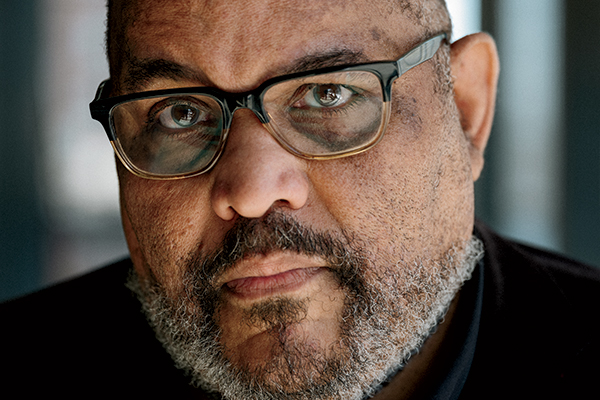Dawoud Bey knows how to photograph people. He’s been doing it practically his whole life. What he wasn’t so sure about was turning his lens away from faces and bodies and toward the more elusive notions of place and time. “It was terrifying,” he says of learning what was essentially a new mode of seeing for his most recent string of projects, starting in 2014 with a series on the changing landscape of Harlem. Though he ultimately achieved what he was going for, he acknowledges thinking: Maybe this is where it ends — you’ve had a good run.
“Good run” is a massive understatement. Bey, a native New Yorker who’s called Chicago home for more than 20 years, began shooting in 1975 and has produced a body of work as extraordinary as that of any living photographer, with numerous achievements along the way, including — just to name a few recent and forthcoming ones — a 2017 MacArthur “genius” fellowship; the publication in 2018 of the compendium Dawoud Bey: Seeing Deeply; a much-feted exhibition earlier this year at the Art Institute of Chicago; and, in 2020, a career-spanning survey organized by the San Francisco Museum of Modern Art and the Whitney Museum of American Art.
While a big retrospective is an honor, Bey isn’t one to dwell nostalgically in the past — even as the past deeply informs his new work, which enfolds and examines history, particularly that of African Americans. The Birmingham Project, exhibited at the National Gallery of Art (and then at Chicago’s Museum of Contemporary Photography), is a series of images that evoke the presence of the black children killed in the 1963 church bombing and the violence that followed, and Night Coming Tenderly, Black, shown at the Art Institute, consists of large-scale black-and-white images of reimagined Underground Railroad sites in northeastern Ohio. His current work in progress centers on plantations in Louisiana.
There’s a spirit of intense engagement, even activism, that runs through Bey’s photography. “I want the work to become experience, to become a part of the world that you’re in. I want it to come off the wall and do something.” In the years since Bey moved here to become a professor at Columbia College Chicago, he has lived by that same ethic, working assiduously to create educational opportunities that benefit the city’s emerging artists. He has, among other things, developed programs at the Hyde Park Art Center and the Arts Club of Chicago and helped implement a photography lecture series at Columbia’s Museum of Contemporary Photography. For him, images are transformative, whether you’re making them or viewing them.



